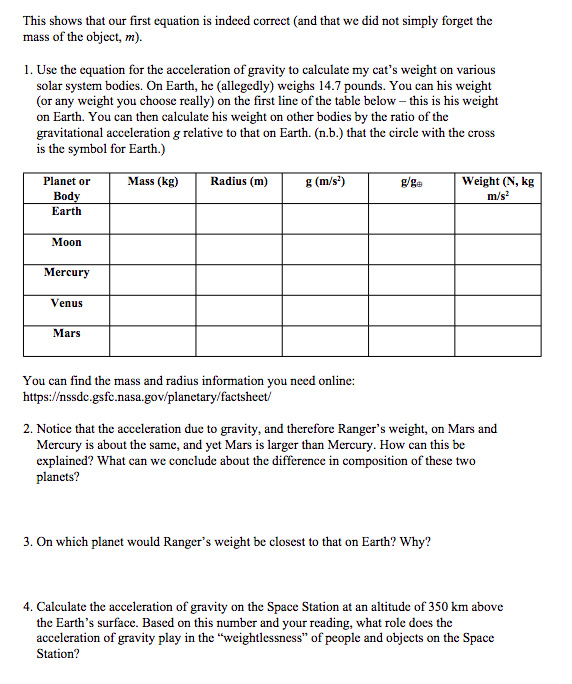Answered step by step
Verified Expert Solution
Question
1 Approved Answer
This shows that our first equation is indeed correct (and that we did not simply forget the mass of the object, m). 1. Use

This shows that our first equation is indeed correct (and that we did not simply forget the mass of the object, m). 1. Use the equation for the acceleration of gravity to calculate my cat's weight on various solar system bodies. On Earth, he (allegedly) weighs 14.7 pounds. You can his weight (or any weight you choose really) on the first line of the table below - this is his weight on Earth. You can then calculate his weight on other bodies by the ratio of the gravitational acceleration g relative to that on Earth. (n.b.) that the circle with the cross is the symbol for Earth.) Planet or Body Earth Moon Mercury Venus Mars Mass (kg) Radius (m) g (m/s) g/ge Weight (N, kg m/s You can find the mass and radius information you need online: https://nssdc.gsfc.nasa.gov/planetary/factsheet/ 2. Notice that the acceleration due to gravity, and therefore Ranger's weight, on Mars and Mercury is about the same, and yet Mars is larger than Mercury. How can this be explained? What can we conclude about the difference in composition of these two planets? 3. On which planet would Ranger's weight be closest to that on Earth? Why? 4. Calculate the acceleration of gravity on the Space Station at an altitude of 350 km above the Earth's surface. Based on this number and your reading, what role does the acceleration of gravity play in the "weightlessness" of people and objects on the Space Station?
Step by Step Solution
There are 3 Steps involved in it
Step: 1

Get Instant Access to Expert-Tailored Solutions
See step-by-step solutions with expert insights and AI powered tools for academic success
Step: 2

Step: 3

Ace Your Homework with AI
Get the answers you need in no time with our AI-driven, step-by-step assistance
Get Started


